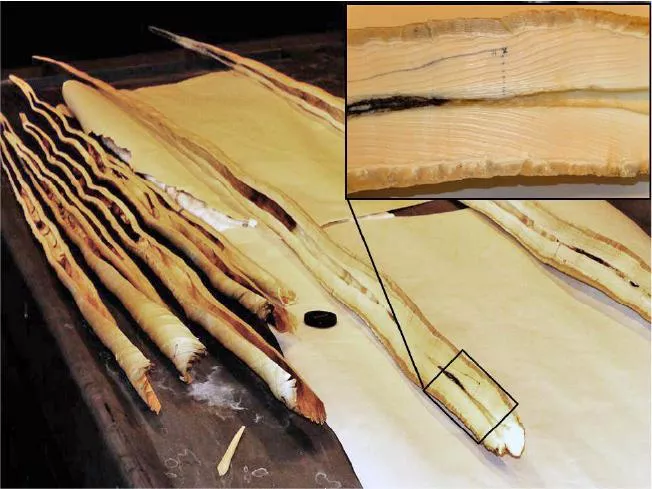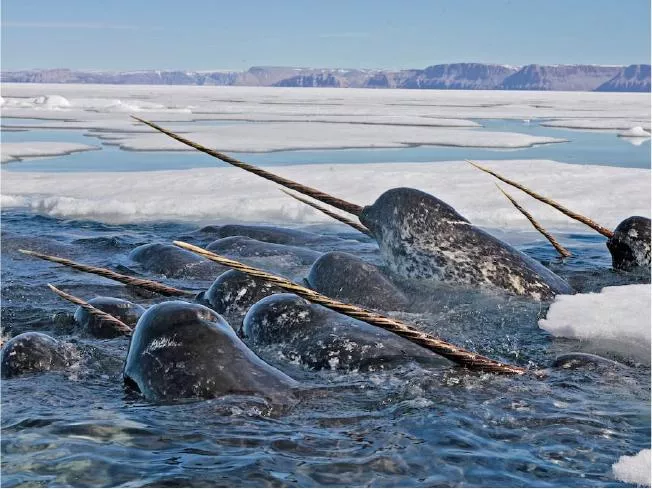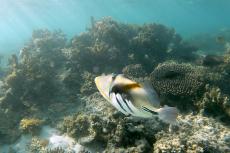Narwhal's tusk tells on its feeding habits, and more
The narwhal’s tusk is like the trunk of a tree—a new growth layer is added to it every year. Scientists have discovered that the layers are a database full of information about the animal’s diet and physiology in each individual year.
Using mercury and stable isotopes of carbon and nitrogen to obtain such information, the team were able to also analyse how the ice cover and the impact of potential toxic compounds have evolved over time.
Their findings were published in the Current Biology journal.
The tusks of the ten narwhals involved in the research were 150 to 248 cm long, and contained data from the time period 1962 to 2010.
According to Post-Doctoral Research Fellow Jean-Pierre Desforges, of the Natural Resource Department in McGill University, Canada, "What we found in narwhal of Northwest Greenland is consistent with a more general trend across the Arctic where sea ice is declining and changing the spatial distribution of sub-Arctic and Arctic fish as well as top predators.”
Up till around 1990, the narwhal’s diet comprised mainly prey associated with the sea ice, like halibut and Arctic cod. During this time, the ice cover was still extensive.
After 1990, when the ice cover in North-West Greenland declined, their diet changed to comprise more open ocean prey like capelin and polar cod. From 1990 to 2000, they accumulated relatively small quantities of mercury.

Changing sea conditions
Then, from 2000 onwards, the mercury levels in their tusks increased significantly without any change in diet. The researchers attributed this to extensive emission of mercury primarily from the coal consumption in Southeast Asia and possibly the changing sea ice conditions in the Arctic as the climate gets warmer, causing changes in the environmental mercury cycle there.
Professor Rune Dietz from the Department of Bioscience and the Arctic Research Centre, Aarhus University, Denmark described the narwhal as the Arctic mammal most affected by climate change, as "whales lack the physiological properties to eliminate environmental contaminants. They don't get rid of mercury by forming hair and feathers like polar bears, seals and seabirds, just as their enzyme system is less efficient at breaking down organic pollutants."
However, on a positive note, the study showed that the narwhal was able to modify its diet, when necessary.
Dietz concluded: "By analysing them [narwhal tusks], we can hopefully get an insight into the narwhals' food strategy from different areas and periods many years back in time. This will provide us with a solid basis for evaluating how the species copes with the changed conditions that it now encounters in the Arctic."

























